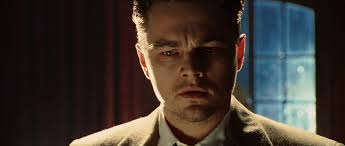
In the realm of filmmaking, directors are the maestros of storytelling, wielding their artistic prowess to create worlds and narratives that resonate with audiences. While every director has a unique approach to their craft, a key element of establishing their identity lies in their ability to shape the mood, style, genre, writing, lighting, camera shots, and camera movement of their films. These components are the palette upon which directors paint their cinematic portraits.
Mood:
Mood is the emotional core of any film. It sets the tone for the entire experience, and directors use it to evoke a specific response from the audience. For example, consider the works of David Fincher, known for his dark, brooding, and intense mood. Films like “Se7en” and “Fight Club” immerse viewers in a bleak and unsettling atmosphere, a testament to Fincher’s mastery of mood.
Style:
A director’s style is their signature, the visual and thematic language they use to tell their stories. Wes Anderson’s films, with their vibrant color palettes, symmetrical compositions, and quirky characters, are instantly recognizable. Anderson’s unique style lends an air of whimsy to his narratives, making them one of a kind.
Genre:
The genre a director chooses to work in can significantly influence their identity. Take Christopher Nolan, whose exploration of complex narratives in science fiction has become his trademark. Films like “Inception” and “Interstellar” showcase his penchant for blurring the lines between reality and imagination.
Writing/Story/Topic:
The heart of any film is its story, and a director’s choice of subject matter and storytelling style can define their identity. Quentin Tarantino is celebrated for his unconventional narratives, sharp dialogue, and penchant for exploring unconventional themes. His films, like “Pulp Fiction” and “Kill Bill,” often delve into the dark and violent corners of society.

Lighting:
Lighting is an essential tool for shaping the mood of a film. Directors like Stanley Kubrick are renowned for their meticulous attention to lighting. Kubrick’s use of stark contrasts and meticulous attention to detail is evident in “The Shining,” where the oppressive, eerie lighting contributes to the film’s sense of dread.
Camera Shots and Moving the Camera:
The way a director frames their shots and moves the camera can have a profound impact on the audience’s engagement. Consider the long, uninterrupted takes in Alfred Hitchcock’s “Rope,” which create a sense of suspense and tension. Hitchcock’s masterful camera work is a testament to his unique cinematic identity.

In conclusion, directors’ cinematic identities are crafted through their mastery of mood, style, genre, writing, lighting, camera shots, and camera movement. These elements are the brushstrokes on the canvas of their storytelling. It is this fusion of creativity, technical expertise, and a distinct vision that allows each director to carve out a unique place in the world of cinema, leaving an indelible mark on the medium for generations to come.
As always be inspired, be encouraged, and be collaborative.
Saki Bomb
Subscribe to the blog!!! Follow us on instagram @_shootingfromthehip